Did you know that in Japan there are more than 5,000 Castles? Ever wondered what Japanese castles look like? What castles are available to visit in Japan Today? In this complete guide about castles in Japan we will explain everything.
Table of Content
What is a Japanese castle like?
Japanese castles were built during the wars in the Sengoku Period and Edo. These Japanese castles were true fortresses divided into several areas called kuruwa [曲輪].
Japanese castles are often located close to mountains or surrounded by moats and a giant stone wall. Within the grounds of the castle there are still other walls that separate the parts and buildings of the castle.
Only soldiers and family members can live on castle territory. The rest of the people of the region lived in small villages and hamlets around and in the vicinity of the castle.
Castle in Japanese is pronounced shiro [城], but we usually hear more of the suffix jyou [城] after the name. The castles in the mountains are called yamashiro [山城], when located in a plain they are called hirashiro [平城], while those located in low mountains and plains are called hashigokaku [平山城].

The castles used to have 3 areas called honmaru [本丸], ninomaru [二の丸] and sannomaru [三の丸]. Some larger castles had places called soto-guruwa.
Some castles had the rinkaku [輪郭] style where the honmaru is located at the center of everything. Another common style was renkaku [連郭] where the honmaru is next to the ninomaru. A third style used in the mountains is called teikaku [梯郭] which resembles a staircase around the mountain.
The walls were called dobei [土塀] and the stone walls were called ishigaki [石垣]. The walls had gaps called hasama [狭間] that allowed soldiers to defend the place and attack enemies through the circular and triangular openings.
The owner of the Japanese castle does not live in the high tower
The castle owner's house is not that tall tower that people imagine. The soldiers and the castle family live in a normal house on the ground. The tall tower is actually the place where the castle owner flees to protect himself from invaders.
The tall multi-story tower is called tenshukaku [天守閣] and is located in the honmaru [本丸]. This tall tower usually has at least 3 stories, but there are castles that exceed 5 stories. That location serves only to defend and have a view of the surrounding area of the castle.

The lower floors of this tower are guarded by soldiers while the owner of the invaded castle stays on the top floor of the tower waiting for an invader to arrive. If the enemies reach the top of the tower, the owner of the castle has the right to commit seppuku.
Seppuku is a suicide ritual where the person needs to cut his belly while the enemy or someone else present cuts off his head to end suffering. For the samurai and chiefs of the time, performing seppuku is dying with honor.
Unfortunately many of these castles were destroyed by fires and in the second world war. Others were demolished during the Meiji Restoration, when feudal castles were considered useless.
How to visit a castle in Japan?
There are thousands of castles spread across Japan, some are just ruins, others have their honmaru or tenshukaku restored. The only castle in Japan that still maintains its original tenshu (tower) is the one in Kakegawa.
Access to some castles is totally free, others usually charge a fee that can range from 200 to over 1000 yen. Some castles charge for access only to the tenshu, others charge in the honmaru or even in the sannomaru.
Some castles have shoes removed to enter the high tower. Large castles like Osaka and Nagoya are like a museum, full of samurai art, models, costumes and weapons. Not all castles give access to the top floor and tower view.
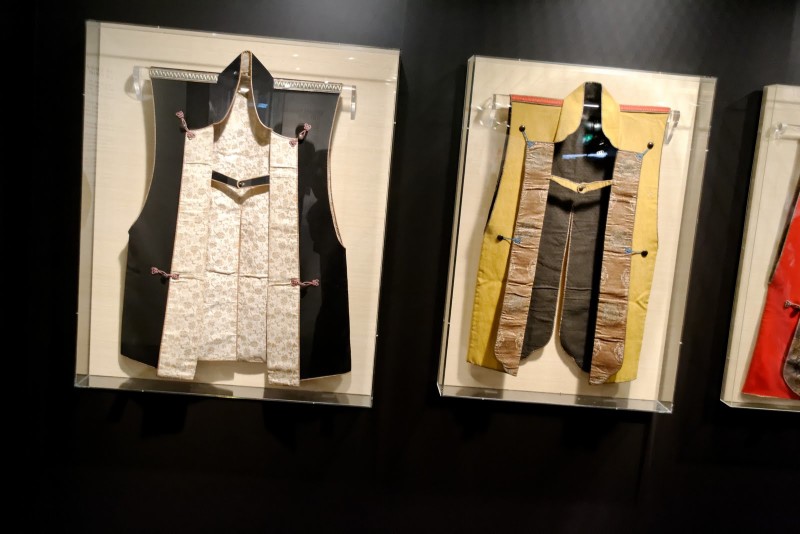
Remembering that the tower is not the only interesting thing found in a castle. Most castles are surrounded by a beautiful park, some have a traditional Japanese garden, others provide access to the house and some buildings of the castle.
In addition to the known castles, you can search for other castles using the Google Maps app. Just be careful not to follow the trail of a castle on the maps and end up in an empty place with nothing, since many are just ruins.
Himeji Castle - The largest castle in Japan
From now on we will specifically talk about some popular castles in Japan. Let's start with one of the main castles you need to know on your trip, the gigantic castle of Himeji.
Himeji Castle is considered the largest in Japan, it has 83 buildings, 3 moats, and is spread over an area of 233 hectares, we have already written an article solely about this castle which can be read by clicking here.
It was originally built in the 14th century, around 1346. It is located on a mountain in Himeji located in the Kansai region. It was expanded in the 17th century by Hideyoshi Toyotomi, the Daimyo responsible for unifying Japan.
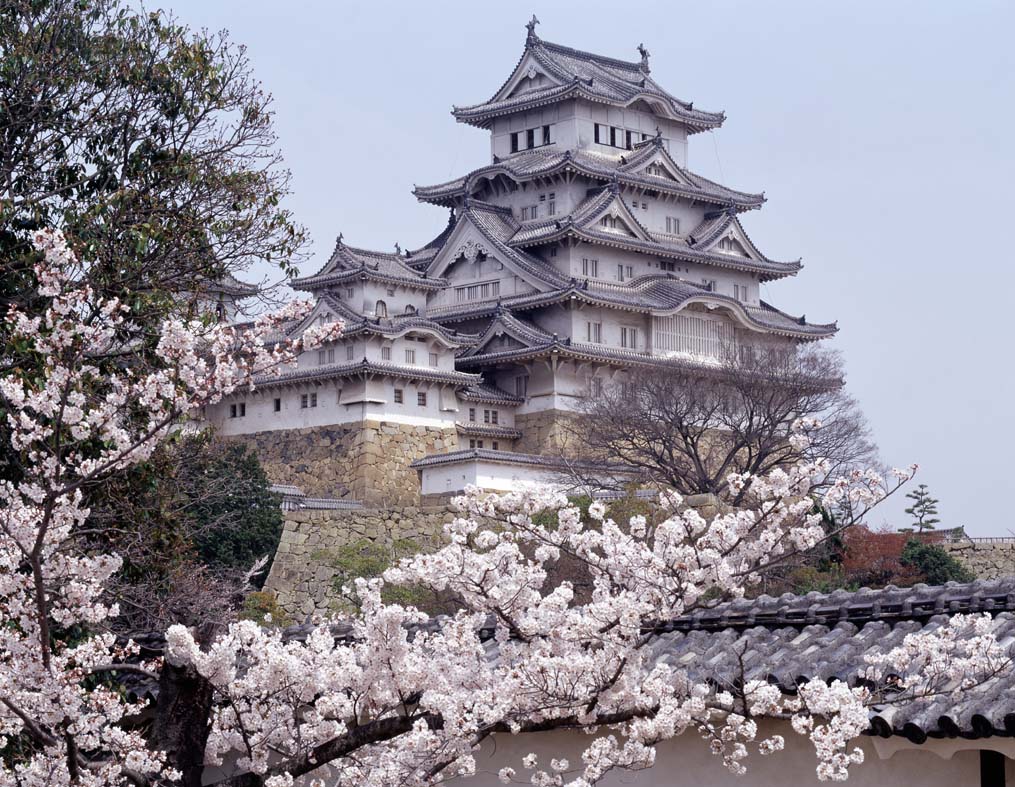
Matsumoto Castle
Matsumoto Castle was built in 1504-1594. Since the Sengoku period, it was initially just a fortress called Fukashi. It is one of 12 castles listed as a National Treasure of Japan.
Matsumoto-jyou is one of the few castles built on plains. It is surrounded by a large lake full of swans and ducks. Some villagers believe it is haunted by the ghost of a rebellious farmer.

Nagoya castle
The Nagoya Castle is located in the center of the gigantic city of Nagoya. Its roots date back to 1520, surrounded by modern buildings and constructions from the 17th century. The castle is completely enclosed, requiring a fee to access.
The tower is not the only attraction of Nagoya Castle. You can also find the Hommaru Palace, which allows you to experience historical architectures of Japan with various panels painted by artists from different regions of the country.
The castle has some golden dolphins on the roof which represented a talisman to prevent fires, unfortunately they burned down in WWII but have been restored.

Edo Castle - Tokyo Imperial Palace
Edo Castle was the largest castle built in Japan, with an unimaginable scale. Its outer moat circled much of what is now central Tokyo. Unfortunately, Edo Castle was completely destroyed in a fire in 1873 and was demolished. What remains are its massive moats, walls, bridges and guardhouses. Most of these were used in the design of the current Imperial Palace. Now, the site of Edo Castle is the Garden that surrounds the entire Imperial Palace and is open to the public.
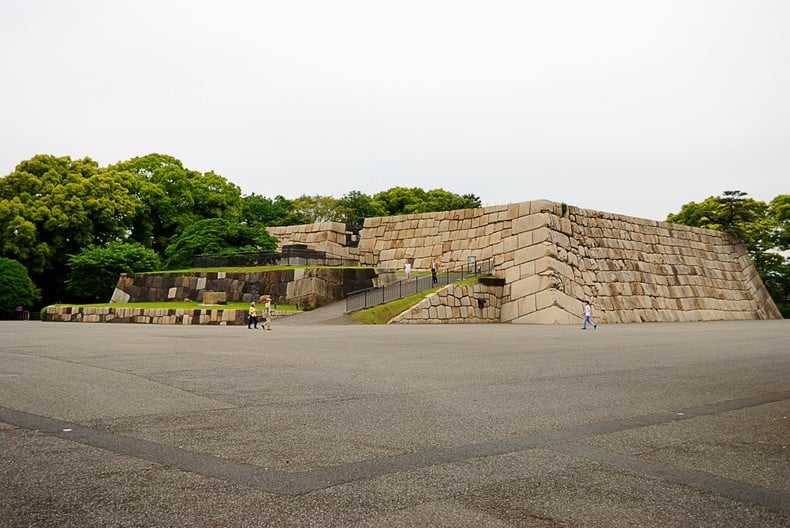
Osaka castle
Osaka Castle is a large castle that witnessed a great number of battles that changed the course of Japanese history. In World War II, the castle was used as an ammunition factory that employed 60,000 people.
It was completely destroyed by a bomb in 1945. Today, the castle has been rebuilt and looks much like it did in the 19th century. Many of the moats, walls and houses have managed to survive in history.
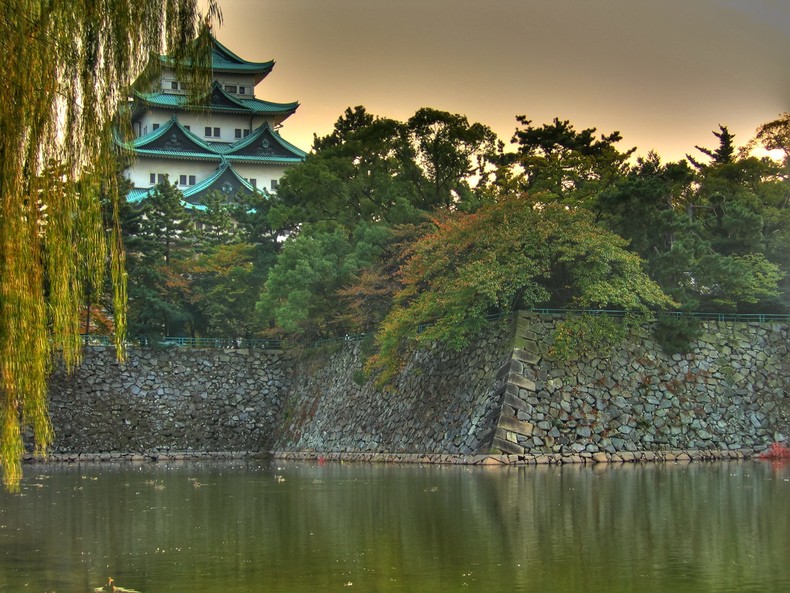
Fukuoka Castle - Maizuru Park
Unfortunately, only ruins remain of a large castle that once had 47 towers. Fukuoka Castle was dismantled in 1871. Several of the original towers, gates, walls and parts of the castle's moat remain today.
Fukuoka Castle is located adjacent to Ohori Park and Maizuru Park, there are the old stone walls and castle barriers. It is also known as Maizuru Castle (dancing cranes), because locals believe they see cranes (bird) dancing.
Be careful not to confuse Fukuoka Castle with Maizuru Castle in Kofu in Yamanashi Province.
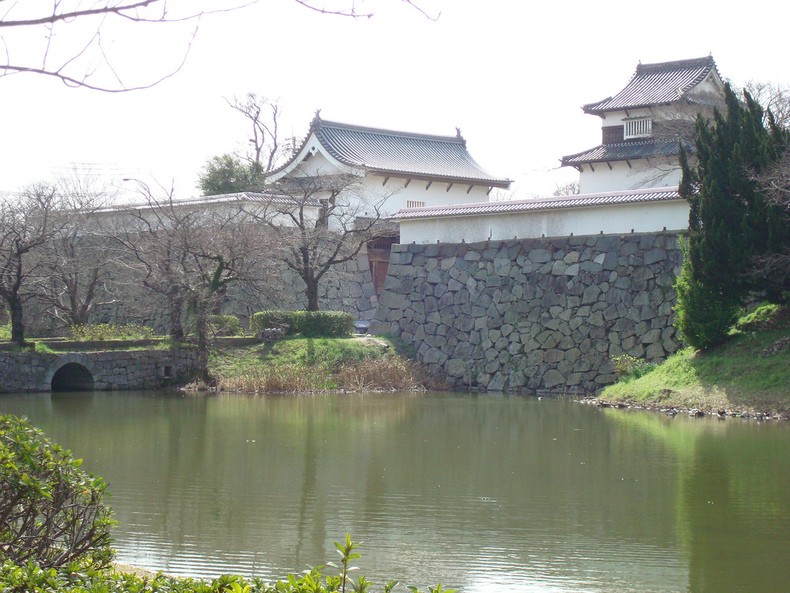
Nijo Castle
Nijo Castle in Kyoto is a testament to the power of the Tokugawa Shogunate, which ruled Japan in the Edo Period. It has two big pits. Inside, there are two palaces, surrounded by gardens that are owned by the Emperor.
The Shogun's Palace is open to the public. It is richly decorated with gold leaf and has floors designed to detect ninja attacks.

Inuyama Castle
Inuyama Castle is located on a mountain and one of the oldest surviving castles in Japan, built in 1440 and renovated in the year 1620. The castle overlooks the Kiso River where the ancient technique of cormorant fishing (ukai) is still practiced.
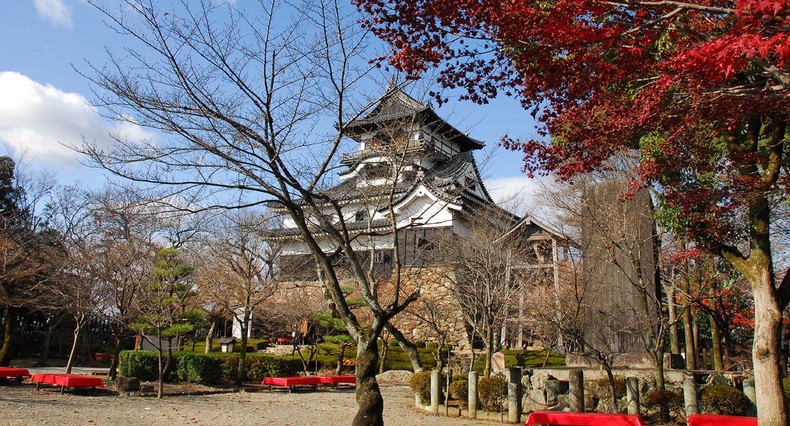
Aizu CastleWakamatsu
AizuWakamatsu Castle is located in the center of Aizuwakamatsu City in Fukushima Prefecture in northern Japan. The castle was built by Ashina Naomori in 1384, named as Kurokawa Castle [黒川城 Kurokawa-jō].
It was the military and administrative center of the Aizu region until 1868 and witnessed numerous battles. It was rebuilt in concrete in the year 1965. Today it is surrounded by a large park filled with stone walls and the remains of moats.
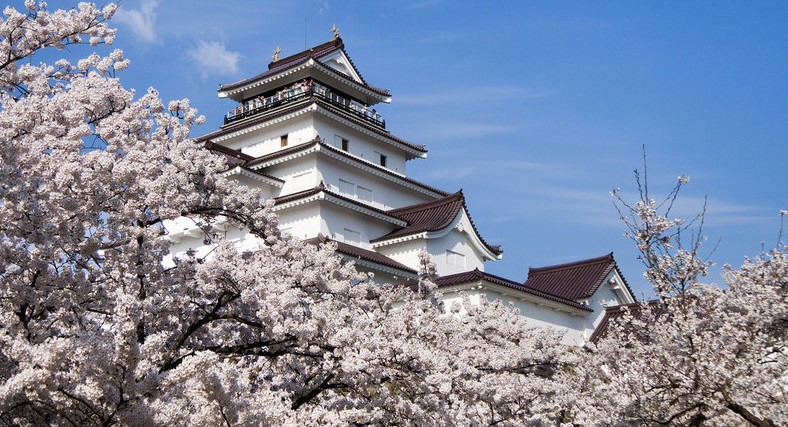
Hirosaki Castle
Hirosaki Castle [弘前城] was built in 1611. It was once the seat of the Tsugaru Clan that ruled over Hirosaki, Mutsu Province that today belongs to Aomori. It measures 612 meters from east to west and 947 meters from north to south.

Kumamoto Castle
Kumamoto Castle is one of the three most famous in Japan and is located in Kumamoto, and was built around 1467. The castle was besieged during the Satsuma Rebellion (1877), having been looted and burned after a siege of 53 days.
The castle's central fortress was rebuilt in 1960. The curved stone walls, known as musha-gaeshi, were designed to keep out enemies. Rockfalls were also used as defensive systems.
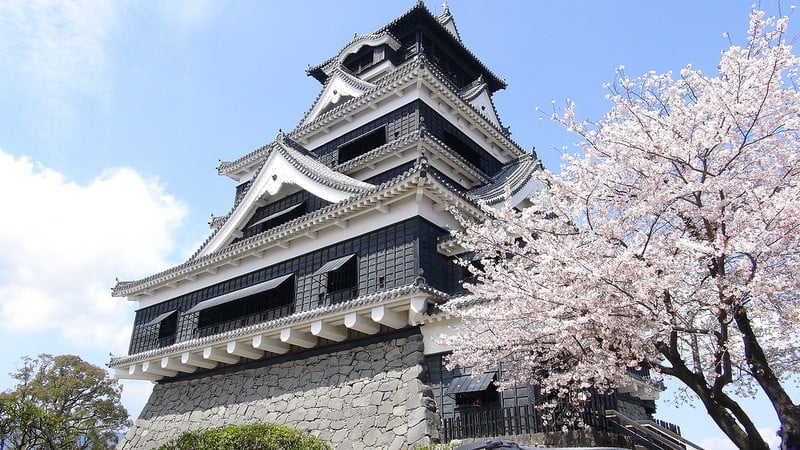
Sasayama Castle
Sasayama Castle is located in Hyogo. Construction was started by order of Tokugawa Ieyasu in 1608 and was completed in six months. Ikeda Terumasa was put in charge of construction and planning was done by Tōdō Takatora.
Twenty daimyos are said to have been mobilized during construction. Unfortunately the castle was destroyed leaving only the Grand Hall which was rebuilt in 2000.
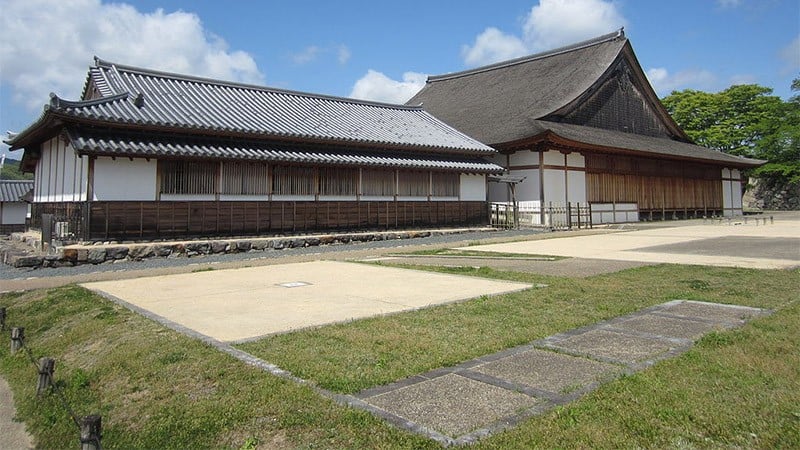
Gifu Castle
The Gifu Castle [岐阜城 figu-jo] is located at the top of Kinkazan (Mount Kinka), near the Nagara River. It was originally built by the Nikaidō clan between 1201 and 1204 during the Kamakura Period. Its first name was Inabayama Castle [稲葉山城]. Since then, it has undergone several renovations.
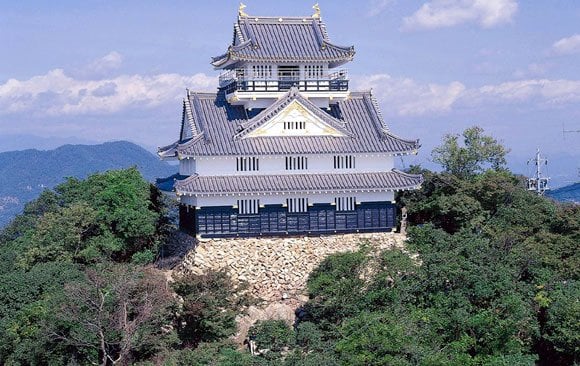
Hiroshima Castle
Hiroshima Castle was built in the 1590s and destroyed in World War II by an atomic bomb. It was rebuilt and turned into a museum.

Kakegawa Castle
The Kakegawa Castle is one of the few castles in Japan where the Goten (daimyo mansion) remains intact. Not to mention that the castle tower is entirely made in a traditional way.
Kakegawa Castle was built in 1487 and is a famous landmark in Tokai. During the Meiji Period (1868-1912), the castle was demolished by the castle abolition law and was rebuilt in its original form in 1994.
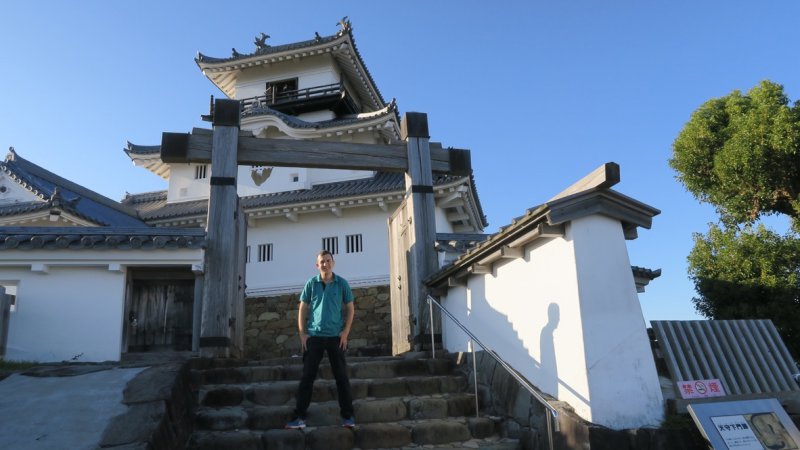
Small Tsu Castle
The Tsu Castle [津城] located in the city of Tsu in Mie Prefecture. The Tsu Castle was built by Hosono Fujiatsu in 1558. In 1568, the castle was taken by Oda Nobunaga and given to his younger brother Oda Nobukane.
In 1608 Takatora Todo became lord of the castle. Situated in the middle of Tsu City, the castle has undergone several renovations and expanded in size. The castle had a tower (Tenshukaku) surrounded by many other buildings, which were built on top of walls to protect the castle from enemies.
In 1600, the castle tower was burned in a fire and was never rebuilt. The only thing left was this small 3-story castle, the fossils, the doors and some highlights. Currently Tsu Castle is located in the center of the city and has become a famous park.
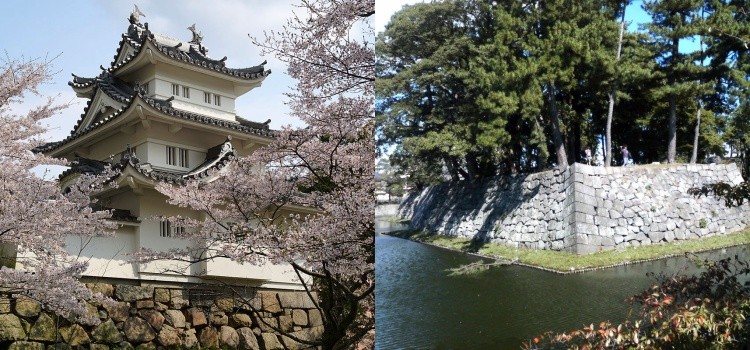
The city of Tsu also suffered attacks during the second world war. In 1871 the castle was demilitarized, most of its structures were destroyed. The park also has historical monuments, green areas and a small lake. Great for anyone who wants to discover local history.
Where the main castle used to be, there is now a beautiful fountain. You can find a beautiful statue of Takatora Todo, the great architect of the castle, in the middle of the honmaru near the tenshudai. You can reach Tsu Castle from Kintetsu Shintsumachi Station. If you are in Mie, we also recommend visiting the castles of Matsuzaka and Tamura.
If you liked the article, share it and leave your comments.
